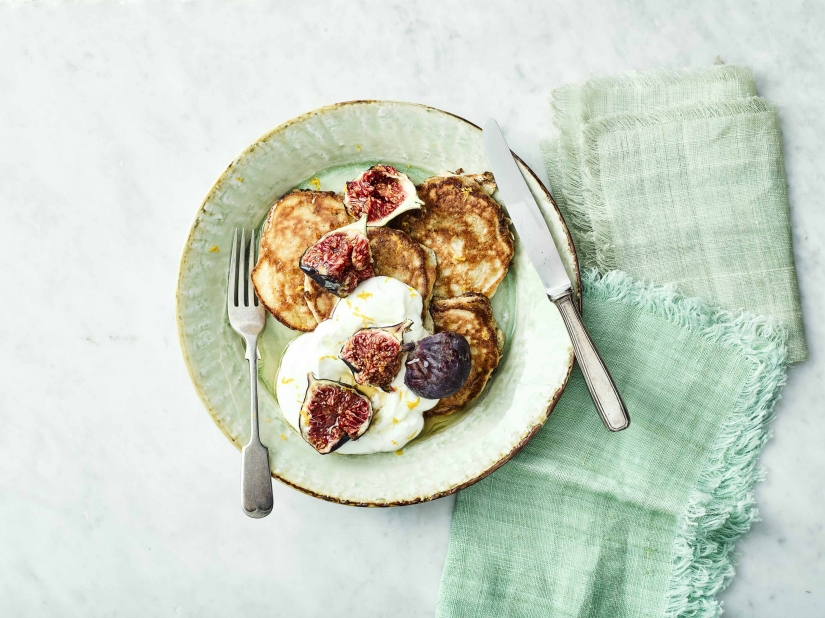Mattar Paneer
Serves: 4
Ready in: 60 mins +
This wholesome dish, known as mattar paneer, or peas and paneer, is based on a simple onion-ginger-garlic masala cooked with softened tomatoes. Fried cumin seeds and aromatic garam masala shape the simple spicing. It’s not uncommon for groups of women in Punjab’s rural villages to sit outdoors in the winter sunshine and collectively pod a huge heap of peas. It’s as much a social activity as it is a practical pursuit. Sadly, time isn’t always on our side and frozen peas, even in India, are a first port of call for busy cooks. It’s worth making paneer from scratch for its superior flavour. However, if you’re using the shop-bought variety, remember to soak it in hot water to soften its texture before frying. India: The World Vegetarian by Roopa Gulati (Bloomsbury Absolute, £20) is published on 30 April, 2020. Photography by David Loftus.

Ingredients:
240g paneer (see below), cut into 2.5cm cubes500ml sunflower oil, for deep frying, plus 4 tbsp
1 tsp cumin seeds
1 onion, finely sliced
4 garlic cloves, finely chopped
20g root ginger, peeled and finely chopped
¼ tsp ground turmeric
½ tsp Kashmiri chilli powder
½ tsp garam masala
4 tomatoes (about 300g), roughly chopped
1 tsp tomato purée
1 tsp caster sugar
250g fresh or frozen peas
2 tbsp coriander, chopped
For the homemade paneer:
2 litres whole milk, close to its sell-by datejuice of 1 lemon
1 tsp fine salt
method:
- If you are using shop-bought paneer, put the cubes in a heatproof bowl and cover with boiling water. Leave to soak for 10 minutes, then drain and pat dry with kitchen paper. (You don’t need to soak homemade paneer.)
- Heat the oil in a kahari or wok, and deep-fry the paneer in batches over a medium heat for about 2–3 minutes, until golden-brown. (Alternatively, deep-fry in a large, wide, sturdy pan no more than two-thirds full with oil.) Drain the paneer cubes on kitchen paper and set aside.
- Heat the four tablespoons of oil in a separate karahi or wok over a medium heat. Add the cumin seeds and fry, stirring all the time, for about 30 seconds, until the seeds darken and release a nutty aroma.
- Stir in the onion and cook for about 7–10 minutes, until golden. Reduce the heat slightly, add the garlic and ginger, and fry for a further 2–3 minutes, until the garlic and ginger turn golden. Stir in the turmeric, chilli powder and garam masala, then add the chopped tomatoes, tomato purée and sugar. Cook over a medium heat for about 3–5 minutes, until the tomatoes have softened, adding a little water if they catch on the bottom of the pan. Reduce the heat to low and simmer, uncovered, for 7–10 minutes, until the masala has thickened.
- Pour in 100ml of water and, as soon as the masala starts bubbling, add the peas. Cook for 3–4 minutes, until the peas are tender. Stir in the cubed paneer and chopped coriander and serve with chapatis.
- To make the paneer, put the milk in a pan over a low heat. Bring it to a simmer, stirring occasionally – this should take about 30 minutes. Once the milk begins to bubble and rise up the pan, add two tablespoons of the lemon juice and the salt – the milk will quickly begin to separate. Add a further tablespoon of lemon juice and continue simmering, until the mixture separates into curds and liquid whey (about one minute). The amount of lemon juice you need altogether will depend on the milk’s freshness – the fresher the milk, the more juice you’ll need for the liquid to separate.
- Line a sieve with a double layer of muslin, then place it over a bowl. Pour the cheese mixture into the sieve and leave the whey to drain through the muslin or cloth. After about 10 minutes, draw the muslin or cloth around the paneer and gently squeeze out any excess liquid. Discard the whey.
- Transfer the cloth-wrapped cheese to a tray and pat it out to a rough triangle about 2cm thick. Cover it with a tray and a couple of weighty tins and leave it for at least 2–3 hours in the fridge, or overnight, if you can. Unwrap the paneer. If you’re not using it straightaway, submerge it in cold water and keep it in the fridge for up to about three days.

Did you make this recipe?
Share your creations by tagging @livegreenandgood on Instagram with the hashtag #livegreenandgood















